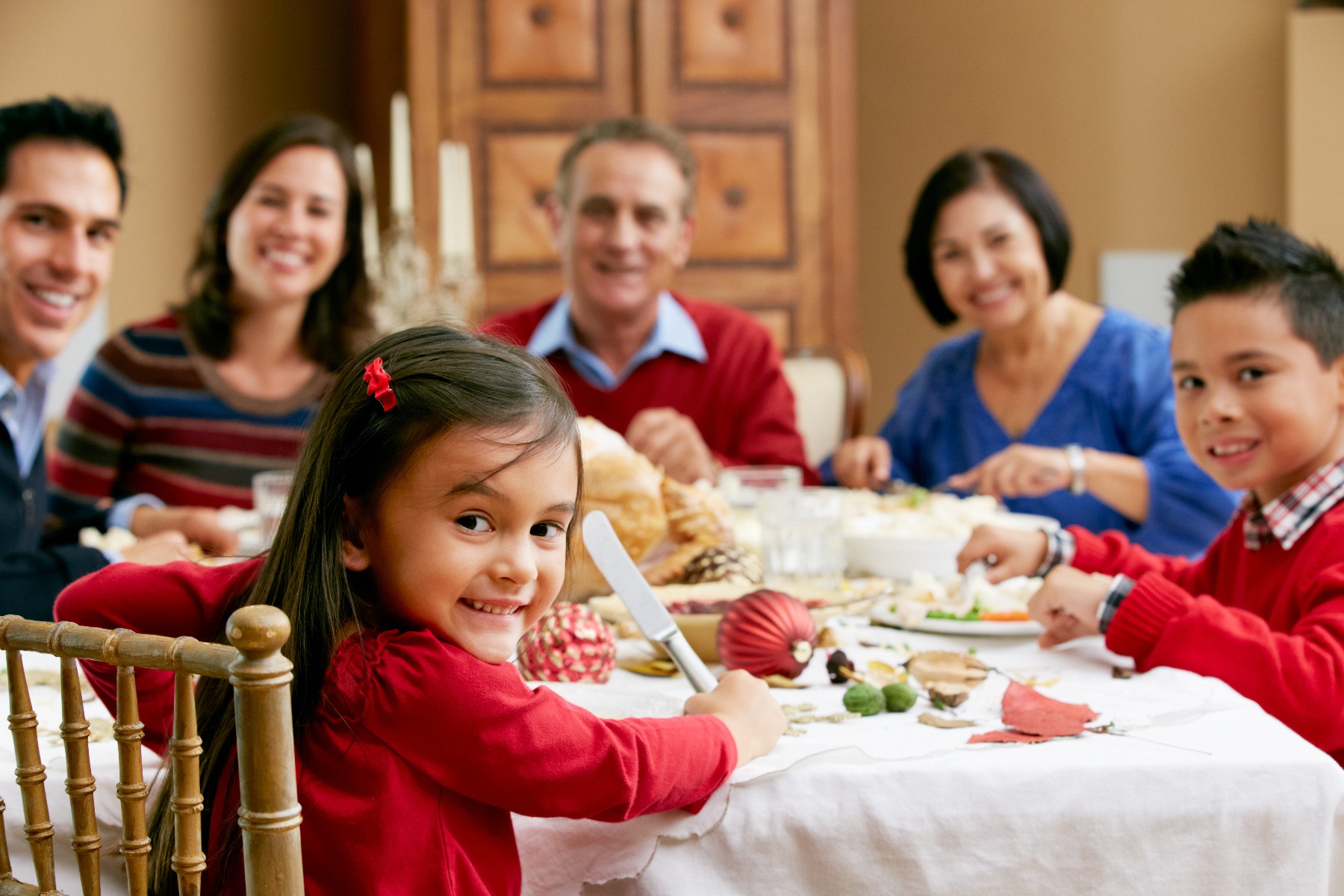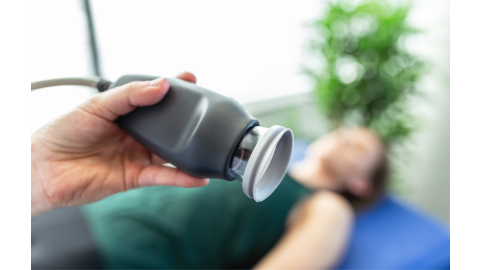Will we be celebrating the holidays over Zoom? Calling Santa on Skype? Having a holiday office party over Microsoft Teams? As the holiday season grows closer, you may be wondering what impact COVID-19 will have on your celebrations.
Thanksgiving feasts, holiday traditions, and even holiday shopping may look very different this year due to the coronavirus. But with the right preparation you can get the most out of your holidays this season - enjoying family time and holiday magic!
Holiday Gatherings During COVID-19: Thanksgiving, Hanukkah, Christmas, and More

The holidays usually mean gathering with large groups of family and friends, including out-of-town relatives that you may look forward to seeing all year. But is it safe to get together this year? There are a number of factors to consider before you decide on in-person or video chat celebrations.
- The Size
- The Location
- The Risk Levels of the Individuals
- Where is everyone coming from?
- How is everyone getting there?
- Where is everyone staying?
- Are people getting tested first?
- Set Ground Rules
- Consider How COVID-19 Moves Through a Community
- Looking to the Future: A Second Wave? A Vaccine?
- In Summary
The Size
How many people are you planning on hosting? Large groups of people increase the risk of getting infected with and spreading COVID-19.1 You also need to consider your state’s orders and recommendations. Some states have limited indoor gatherings to 10 people while others allow larger groups, such as up to 50.2 Can you safely have all of your relatives over while following your state’s guidelines? If you can’t, it might be best for individual families to join one large group video chat or to split into smaller in-person group gatherings instead of getting together as one large group.
The Location
Outdoor gatherings are considered less of a risk than indoors. If you’re living in Colorado, that poses much more of a problem than if you live in Florida. If you live somewhere with a warmer climate, consider gathering outside for your celebrations. The Centers for Disease Control and Prevention (CDC) recommends gathering outdoors and allowing for social distancing when possible.3 If you’ve got two feet of snow on the ground and a windchill of -10, you’ll need to decide if you feel comfortable gathering inside or would rather go virtual.
The Risk Levels of the Individuals
Is it safe for grandma and grandpa to join you this holiday season? Older individuals (over the age of 65) and those with certain conditions such as cancer or diabetes are at an increased risk for severe illness. You can see a complete list of conditions on the CDC’s website. If your group includes people at risk, how will you keep them safe? Will everyone social distance and wear masks or will your three year old run to hug grandma? It may be safer to have at-risk individuals join the celebration over video chat.
Where is everyone coming from?
Are your guests coming from a nearby town or traveling from another state or country? The CDC states that gatherings with attendees from outside the local area increases the risk of COVID-19 spreading.1
Out-of-town visitors need to consider state orders for quarantining. The state you’re visiting may require you to quarantine when you first arrive or when you return home. For example, Maine requires a negative COVID-19 test or a self-quarantine for 14 days after arriving from most states.2 Cities may also have quarantine rules: like Chicago, which requires a 14 day quarantine when arriving from certain states. Can you take the time to quarantine before and after your gathering if needed? Can you work from home or do you need to head back to your job when you return home?
These considerations may be part of the reason why Zeta Global states that 58% of consumers are not planning to travel this holiday season, up from 49% last year.4
You’ll need to decide if you’re sticking with just your immediate family, including relatives who live nearby, or including out-of-town relatives too.
How is everyone getting there?
You’ll also need to consider how your guests are getting to your home. Riding in a car generally has less of a risk than a train or plane, but if your family is road tripping home, restroom breaks, gas fill-ups, and meal stops all carry some risk. An airport can be full of other people and germs, but most planes have HEPA filters that filter out 99.7% of airborne microbes.5 Learn more about staying safe while traveling and the risks of different travel options.
If you are travelling by plane, some airlines are offering lower ticket prices to boost demand, but because of plane groundings prices may also be higher over the holidays with fewer flights taking place.5 You’ll also want to consider your refund and credit options, in case a conflict comes up or you change your mind.5
Where is everyone staying?
Do you usually have all the cousins bunking together in the basement? Allow your aunt and uncle to stay in the guest room? You’ll need to decide if you feel comfortable having people stay overnight or if a hotel room is a better option. The CDC states that the longer the interaction lasts, the higher the risk for contracting and spreading COVID-19.1 Are you ready to bring more people into your bubble?
Dr. Paul Pottinger, a professor of infectious disease at the University of Washington School of Medicine, states that it’s important to consider how guests are arriving. If they are flying in, they should be physically distancing for 14 days. But if they have self-isolated for the past 14 days, have been careful, and drove in there is no need for distance, masks, or different cleaning.5 If your guests are over 60 or high-risk, he states that you must be diligent with social distancing, wearing a face covering when leaving the house, washing your hands and cleaning high-touch items, like your cellphone.6
Can your guests stay at home for two weeks before they drive in? Or can they quarantine in a hotel room for 14 days after flying in? Can they stay in a hotel and come over for an outdoor, socially-distant gathering? Or is it better to celebrate over video chat?
You’ll need to decide what works best for your family. Kristin Bratton Nelson, an infectious disease epidemiologist at Emory University, says that staying in someone’s house increases your risk for virus transmission, but “if you plan on spending a lot of time visiting someone in their house, then staying in a hotel won’t really help—it’s the combination of staying elsewhere and outdoor socializations that will minimize risk”.8
Are people getting tested first?
As access to testing increases, many swab and saliva tests can get you results in just a few days. Confirming everyone is negative can help reduce some concerns at your holiday gathering.
But getting tested isn’t foolproof. One study found that the chance of a false negative, receiving a negative test result when the person is actually infected, could be as high as 1 in 5.7
Plus, you could be exposed and infected during your travel.
So even if everyone tests negative, most medical experts still recommend social distancing, mask wearing, hand washing, and other precautions.
Set Ground Rules
If you have family visiting for the holidays, it’s important to communicate and set ground rules so everyone is on the same page.
Will you all practice social distancing? Will you all wear masks? Will you all self-quarantine for 14 days and then get together without masks?
If you have family returning to their hometown, are they going to meet with old friends and high school buddies before coming to see you? Some people may be comfortable with that if the other gathering is socially distant and masks are worn, while others may think that is too much of an extra risk. Can relatives eat indoors at restaurants?
By deciding on ground rules and what everyone is comfortable with ahead of time, you can spend your holiday enjoying your time together and not spending all of your time worrying about if everyone is following the same set of precautions.
Consider How COVID-19 Moves Through a Community
Small gatherings can lead to bigger outbreaks. Just look at the CDC’s report community transmission in Chicago, IL. This took place before social distancing guidelines. One family friend who had been out of state and had mild respiratory symptoms attended a funeral and then, three days later, attended a birthday party. The person unknowingly spread the coronavirus-19, and before long 16 people between the ages of 5 and 86 had been infected - and 3 of them had died.
The CDC states that “This cluster comprised 16 cases of COVID-19 (seven confirmed and nine probable), with transmission mostly occurring between non household contacts at family gatherings...These data illustrate the importance of social distancing for preventing SARS-CoV-2 transmission, even within families. In this cluster, extended family gatherings (a birthday party, funeral, and church attendance), all of which occurred before major social distancing policies were implemented, might have facilitated transmission of SARS-CoV-2 beyond household contacts into the broader community.”10
As you decide on holiday plans, consider how meeting in person could spread beyond your group.
Looking to the Future: A Second Wave? A Vaccine?
If you’re planning your holiday ahead of time, you may not know what COVID-19 will look like during Thanksgiving, Christmas, or Hanukkah. Try to keep your plans flexible, so you can adapt to future information from the CDC, new state orders, and other news about COVID-19 and its spread.
Will there be a second wave of COVID-19 infections? The CDC Director, Robert Redfield warns that the second wave of COVID-19 infections this fall could be worse than the first.11 This is because it may hit at the same time as flu season, leading to an overwhelmed healthcare system. The first COVID-19 wave exposed shortages in test kits, ventilators, and protective equipment for healthcare workers. Coping with two respiratory outbreaks at the same time could make the second wave worse.11 If there is a second wave, holiday travel and gatherings may not be recommended or possible depending on state and CDC guidelines.
Will there be a vaccine by the end of the year? Federal officials state that companies testing possible COVID-19 vaccines should know if they are effective by the end of the year.12 The U.S., as part of the Trump administration’s Operation Warp Speed initiative, has invested billions of dollars in six potential vaccines.13 Paul Mango, deputy chief of staff for policy at the Department of Health Human Services says that Operation Warp Speed maximizes the probability of having at least one vaccine, two of the vaccine candidates are in phase 3 trials and there will be four vaccines in phase 3 trials by the middle of next month.12 The CDC sent guidance last week to all 50 states, territories, and New York, Chicago, Philadelphia, Houston, and San Antonio addressing COVID-19 vaccine guidance including the criteria and potential scenario that vaccines could be distributed as early as the end of October in Phase 1. However there would be a limited number of vaccines until next year and available vaccines would go to healthcare workers, essential workers, long term care residents, and other at-risk populations.14 If a vaccine is found this year, it probably will not be available in time to make Christmas and other holiday celebrations safe.
In Summary
51% of Americans don’t think that they will be able to spend Christmas with their families, according to a recent survey.15 When missing time with loved ones, the survey found that 75% of Americans believe Christmas is the most difficult time of year to spend without family, followed by Thanksgiving at 18%.15
If you choose to spend Christmas apart from your relatives, you’re not alone. Phone calls, video chats, and even handwritten letters can help bridge the gap. You can open packages together over FaceTime or enjoy your yearly reading of Polar Express on Christmas Eve over Zoom. If some nearby relatives aren’t so tech-savvy you could always stop by and wave from the car or outside their window.
If you choose to spend the holidays with your extended family, try to socialize outside if possible. Visit in a small group and limit the number of households getting together. Try to keep your visits short to avoid prolonged contact. Don’t share food or drinks, avoid touching common surfaces, practice social distancing, wash your hands, wear a mask, and make sure people stay home if they have any symptoms or have been in contact with anyone with symptoms in the past 14 days.16 Remember: Time, Place, People, Space. The less time, outdoors, with fewer people, and plenty of distancing, the better. Have fun even if only part of the family can meet up and take time to call grandparents and others who can’t be there in person.
Remember to follow federal, state, and local orders, do what you are comfortable with, and consult the CDC website for more information:
Christmas and COVID
Family gatherings aren’t the only things that many people look forward to during the holidays. Do you have more questions about how to celebrate Christmas during COVID-19? Learn about how holiday shows, parades, shopping and even visiting Santa may look different this year in this article: How To Prepare for Christmas During COVID-19.
References
- CDC. (July 2020). Considerations for Events and Gatherings. Centers for Disease Control and Prevention. Retrieved from https://bit.ly/2FBG6Kn
- Bunis, D. and Rough J. (September 2020). List of Coronavirus-Related Restrictions in Every State. AARP. Retrieved from https://bit.ly/2FFnglz
- CDC. (September 2020). Personal and Social Activities. Centers for Disease Control and Prevention. Retrieved from https://bit.ly/3iAhUXl
- Vora, S. (August 2020). Is winter holiday travel canceled? Not quite. CNN. Retrieved from https://cnn.it/2H3EzgO
- Peterson, B. and Dunn, D. (September 2020). Is It Safe to Travel Again? Your Coronavirus Questions Answered. The Wall Street Journal. Retrieved from https://on.wsj.com/2ZIYBnk
- Blethen, R. (August 2020). FAQ Friday: How can you reduce risk hosting overnight house guests or taking road trips amid COVID-19?. The Seattle Times. Retrieved from https://bit.ly/2RtCOLL
- Johns Hopkins Medicine. (May 2020). Beware of false negatives in diagnostic testing of COVID-19. ScienceDaily. Retrieved from https://bit.ly/3bYSz6W
- Baran, M. (May 2020). When and How Will I Be Able to Safely Visit My Friends and Family?. AFAR. Retrieved from https://bit.ly/2E2HmWg
- Cha, E.A. (April 2020). A funeral and a birthday party: CDC traces Chicago coronavirus outbreak to two family gatherings. The Washington Post. Retrieved from https://wapo.st/3kp6c2j
- CDC. (April 2020). Community Transmission of SARS-CoV-2 at Two Family Gatherings — Chicago, Illinois, February–March 2020. Centers for Disease Control and Prevention. Retrieved from https://bit.ly/2E2qtej
- Sun, L. H. (April 2020). CDC director warns second wave of coronavirus is likely to be even more devastating. The Washington Post. Retrieved from https://wapo.st/32vGBi0
- Croft, J., Gumbrecht, J., Howard, J., & Cullinane, S. (August 2020). Coronavirus vaccine trial results expected by end of year, US officials say. CNN. Retrieved from https://cnn.it/2Rwl3LH
- Lovelace Jr., B. (September 2020). CDC asks states to speed approvals so coronavirus vaccine sites are ready by Nov. 1. CNBC. Retrieved from https://cnb.cx/2ZERj3T
- Parkinson, J. (September 2020). CDC Sends COVID-19 Vaccine Guidance With Fall Timeline. ContagionLive. Retrieved from https://bit.ly/33xv80t
- Barron, A.M. (June 2020). Coronavirus: Do New Yorkers expect to see family this Christmas? Staten Island Advance. Retrieved from https://bit.ly/2ZFT2pC
- McCallum, K. (May 2020). What You Need to Know About Visiting Loved Ones Who Are More Vulnerable During COVID-19. Houston Methodist Leading Medicine. Retrieved from https://bit.ly/3hz0SYf
Medical Disclaimer: The information provided on this site, including text, graphics, images and other material, are for informational purposes only and are not intended to substitute for professional medical advice, diagnosis or treatment. Always seek the advice of your physician or other healthcare professional with any questions or concerns you may have regarding your condition.








 France
France Australia
Australia






